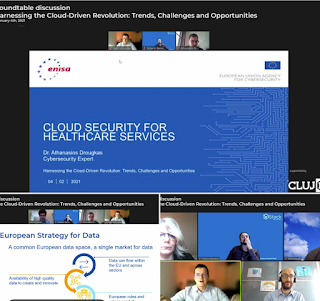Last week I had the opportunity to be one of the panelists of a cloud workshop organized by the Europan Commission - 𝐇𝐚𝐫𝐧𝐞𝐬𝐬𝐢𝐧𝐠 𝐭𝐡𝐞 𝐜𝐥𝐨𝐮𝐝-𝐝𝐫𝐢𝐯𝐞𝐧 𝐫𝐞𝐯𝐨𝐥𝐮𝐭𝐢𝐨𝐧: 𝐭𝐫𝐞𝐧𝐝𝐬, 𝐜𝐡𝐚𝐥𝐥𝐞𝐧𝐠𝐞𝐬 𝐚𝐧𝐝 𝐨𝐩𝐩𝐨𝐫𝐭𝐮𝐧𝐢𝐭𝐢𝐞𝐬.
The event was a great opportunity to explore #cloudcomputing adoption and emerging technology trends through an interesting session with a number of delegates of European organizations. The discussions during the 4 hours workshop were about the impact of the cloud on our ways of doing business and how we can ensure that data protection and data privacy can be maintained on long term, especially if we take into consideration the limited number of EU regions where we have a cloud location.
If you want to find more about it you can check the below URL - https://www.linkedin.com/posts/cluj-it-cluster_cloudcomputing-cloudapplications-advancedtechnologies-activity-6763408930535215104-WofF

Comments
Post a Comment